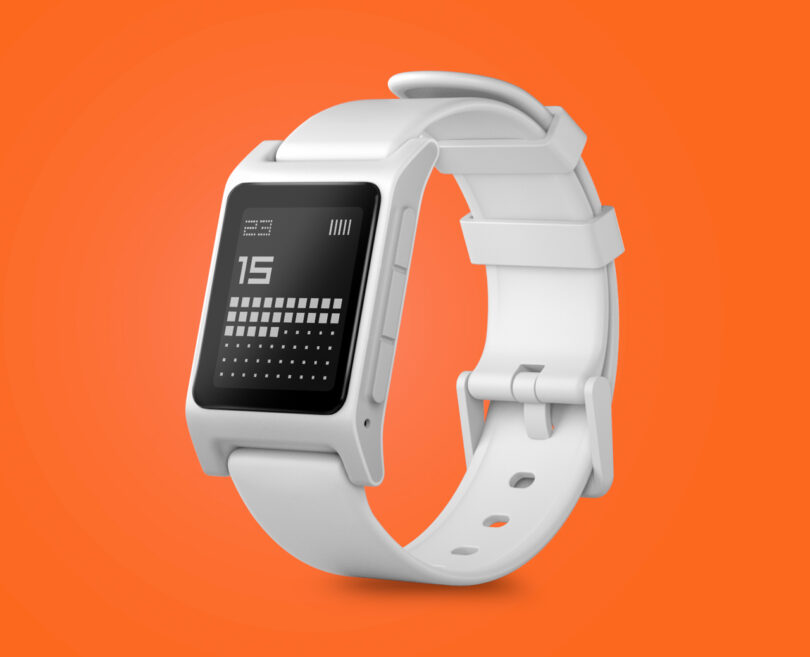www.engadget.com
When it debuted in 2022, Apples 10th-generation iPad sat in something of a no-mans land, bringing a long-overdue design revamp at an inflated price. A year and a half later, Apple gave the slate a $100 price cut and immediately turned it into a much more enticing value. Now, the company has quietly released a follow-up. Dubbed the iPad (A16), the new tablet is a far less dramatic update, one with welcome performance improvements that otherwise refuses to rock the boat. It even lacks the Apple Intelligence features Apple has endlessly promoted over the past year. This isnt necessarily a bad thing. Compared to the iPad Air, iPad Pro and iPad mini, this might be the easiest Apple tablet to grok its the cheapest, it only comes in one size and its clearly designed for the core iPad Things. That doesnt make it a slam dunk, though. What hasnt changed Almost everything about the latest iPad is identical to the previous entry-level iPad from 2022, which brought many of the iPad Airs features down to a lower price. The design is unchanged, with the same dimensions, weight, bezels, display and aluminum finish as before. Apple now lists the screen as being 11 inches instead of 10.9 inches, but its merely rounding up for marketing purposes the size is no different. There are still competent 12-megapixel cameras on the front and back, with the selfie cam conveniently located along the devices long edge for FaceTime calls. The same reliable Touch ID fingerprint sensor is built into the power button in lieu of Face ID. Two speakers, one on either end, sit behind a (misleading) quartet of grilles, while a lone USB-C port continues to max out at basic USB 2.0 transfer speeds. Theres no difference in accessory support either, and the whole thing is available in the same bold colors: blue, pink, yellow or silver. Battery life, meanwhile, still checks in at around 10 hours per charge, give or take a few depending on how you push it. I got 11 hours and 19 minutes out of the slate after playing a 1080p movie on loop at roughly 70 percent brightness and volume (and with Wi-Fi and Bluetooth disabled). Gaming and media editing will naturally sap it faster. Most of this is still perfectly fine for a $349 tablet. The last iPad was a light and comfortable slab, with a substantial aluminum finish and flat sides that made it feel modern. This one is no different. And iPadOS is still a level above Android and Windows tablets when it comes to app and game support, long-term updates and features optimized for large displays. But if the 10th-gen iPad was a tick update, the iPad (A16) is clearly a tock. That said, there are some important changes, namely a faster chip, more memory and higher storage options, plus a few minor tweaks like Smart HDR 4 processing for photos and support for Bluetooth 5.3 instead of Bluetooth 5.2. Its a spec bump through and through, with most of those tweaks being for the better, although I do think that some of the things that havent been touched could really use an update next time. A faster chip and more RAM As the name implies, the latest iPads headline upgrade is its A16 chip. This is a slightly weaker version of the A16 Bionic found in 2022s iPhone 14 Pro and the regular iPhone 15 from 2023. Compared to that SoC, this A16 has five CPU cores instead of six and four GPU cores instead of five. But in practice, its still more than fast enough for the vast majority of things people do with iPads: browsing the web, streaming video, reading ebooks, viewing and editing photos, playing most games and the like. I tested this iPad against my personal 13-inch iPad Air M2 for much of this review, and the two consistently booted up and loaded popular apps at virtually the same speed. The few times the Air M2 was quicker, the difference wasnt long enough to be significant. Geekbench 6 results back this up: The iPad (A16) earned a single-core CPU score of 2,582, while the iPad Air M2 was only marginally better at 2,632. This is a roughly 20 percent jump from the 10th-gen iPad, though the most recent iPad Air M3 still measures about 16-18 percent faster. But for media consumption and common work tasks, it wont feel slow anytime soon. These performance gains are helped by the 6GB of RAM, which is 2GB more than the last model and twice as much as the 9th-gen iPad from 2021. While this is still 2GB short of the iPad Air and lower-spec iPad Pros, getting more memory for the same price is always a good thing: It lets the tablet hang onto apps and Safari tabs longer before it has to start refreshing things for new tasks. It will only improve the chances of the device holding up four or five years down the road, too. Where the iPad (A16) lags behind its higher-end siblings is multi-core and graphics performance. In Geekbench 6, the tablets multi-core CPU score was about 40 percent below the iPad Air M2 (6,185 vs. 10,006), while its GPU score was about 55 percent worse (19,448 vs. 42,920). Other graphics benchmarks were largely the same: It scored about 60 percent lower than the Air M2 in 3DMarks Wild Life Extreme test (with an average of 15.2 fps vs. 37.6 fps) and anywhere between 45 to 55 percent worse on GFXBenchs Aztec Ruins benchmark, depending on the resolution. Of course, the difference will be a little greater with the newer iPad Air M3. This sounds more dramatic on paper than it does in real life. Many everyday iPad workloads wont tax the chips multi-core abilities all that hard, and the scores above are still a good 15 to 30 percent higher than the last entry-level iPad. I could still play Call of Duty Mobile at its highest settings (120 fps mode aside) without any hitches. Diablo Immortal warned that maxing out its settings would put the device under high load with the Air M2, it only goes up to medium load but I still got through the opening areas totally fine. (It does seem to drain the battery a bit faster, though.) You can still edit RAW photos in Lightroom or create music in GarageBand without major frustration. The iPad (A16) on top of a 13-inch iPad Air. Still, the Air is better if you ever want to push things further. This is easiest to see in the newest and most taxing iPadOS games. With Infinity Nikki, for instance, playing at ultra or high settings on the new iPad brought a constant bit of choppiness and some slowdowns during more involved animations. It also warmed up the devices back and drained the battery faster. The game was still totally playable at medium settings, but theres less need to knock it down on the iPad Air M2, where it looked sharper and ran smoother at high settings. Likewise, the Air will be noticeably quicker to export higher-res videos in apps like Adobe Premiere Rush. Arguably, the main benefit of the iPad Airs M-series chip and extra RAM has less to do with today than it does the future. Features like Apple Intelligence and the Stage Manager multitasking mode arent available here, nor are some especially demanding games. Those arent essential right now though omitting Stage Manager does make the device more cumbersome to use with an external display but therell always be some risk that the next great iPadOS feature or power-hungry game wont work (or work as well) with this entry-level model. More storage hallelujah The best improvement with the iPad (A16) is also the simplest: It now starts with 128GB of storage, which is twice as much as the last model. Theres also a new 512GB option for $649. There isnt much to say about this besides good. Its a common-sense upgrade that makes the tablet a much safer long-term investment than its predecessor, especially when theres no hope of Apple ever letting us upgrade storage manually. A fine display, but its time to improve In his iPad Air M3 review, my colleague Nathan Ingraham argued that its time for Apple to update the Airs display with a higher refresh rate or a mini LED panel, as the OLED tech exclusive to the iPad Pros represents a major upgrade on its own. Since the iPad (A16)s screen is no different than the last one, I want to make a follow-up case for the entry-level model, albeit on a smaller scale. It's much easier to see in person than through photos, but if you look at the bottom corner of the display, near the bezel, you can see the air gap between the iPad's LCD panel and front glass. Out of context, the IPS display here is still totally adequate. Its comfortably sized, its sharp enough, its not a massive smudge magnet and it doesnt have any serious color accuracy issues. A tablet is nothing if not a big display, and most of the people Apple is targeting with this one will still enjoy watching and reading stuff on it. I can also live with the 60Hz refresh rate thats the minimum in 2025, but its a harsher limitation on a $599 (or $799) tablet like the iPad Air than a $349 device. The other restrictions are more annoying. This screen still isnt laminated, most notably, which means theres a visible air gap between the LCD panel and the glass above. This helps the screens repairability but makes it look cheaper and feel more distant when you interact with the glass. This is particularly discernible with the Apple Pencil: Writing out notes on the iPad Air is both quieter and more natural. Those whove never used a higher-end iPad probably wont care, but once you notice the difference, you cant unsee it. The display also lacks an anti-reflective coating, so its worse at fending off glare. Its certainly not unusable outdoors, but youll see your reflection much more clearly on the iPad (A16) than you will on the iPad Air M2 in sunlight. Youre much more likely to have to angle its display to make things out. Unlike the iPad Air and iPad Pro, the base iPad isnt tuned for the wider P3 color space either. While the difference in color reproduction between the iPad Air and iPad (A16) is nowhere near as dramatic as the one between the Air and the iPad Pro, colors on the Air can still look slightly bolder and less washed-out when you put the two side-by-side. I appreciate that Apple wants to keep its good, better, best hierarchy intact, but at this point the iPad Pros display is so far ahead of the rest of the lineup that theres room to even things out. If the next Air can upgrade to 120Hz, as Nathan suggests, then the next entry-level iPad should at least have a laminated display with better glare protection. Those arent premium features anymore. The USB-C Pencil can attach magnetically but lacks wireless charging and pressure sensitivity, so it's not a great choice for more involved work. Continued weirdness with accessories Apple Pencil and Magic Keyboard support is another ongoing pain point. Like its predecessor, the iPad (A16) isnt compatible with the Pencil Pro (Apples best stylus) or the older, second-gen Pencil. That means the only stylus you can buy with pressure sensitivity a key feature for digital artists that lets you make darker marks by pressing down harder is the original Pencil, which is nearly a decade old (!), isnt as comfortable as the newer models and cant attach to the tablet magnetically. It also requires a USB-C cable and a USB-C to Lightning adapter to charge. All of this is bad. You can still get the $79 USB-C Pencil, which is nicer to hold and can attach to the iPads side magnetically but isnt pressure-sensitive and still requires a separate cable to pair and charge. Really, though, most people who want an iPad for drawing should start with the iPad Air. Ive never been a big fan of this iPads Magic Keyboard Folio either, as its Surface-style kickstand is hard to keep stable on your lap and it lacks backlit keys. Thats tough given its exorbitantly high price of $249. Not built for Apple Intelligence, but thats OK (for now) As noted above, the iPad (A16) isnt compatible with Apple Intelligence, which is Apples catch-all term for the suite of generative AI features its gradually rolled out since late last year. In fact, its the only major device Apple has released without the AI tools since they became available. Right now, though, you wont miss much without them. Sure, the Clean Up feature that lets you scrub unwanted objects from photos is nice. Some of the writing-assistance tools are fine if youre completely out of gas, and being able to access ChatGPT through Siri is convenient. But just as many of the tricks are either half-cooked or, lets say, less than essential. A promised Siri revamp has been significantly delayed. If anything, many people will appreciate that their tablet wont push AI onto them with every update. Theres always a chance Apple Intelligence becomes more useful down the road, and buying the iPad (A16) means locking yourself out of that potential future. But its not there yet, and Apple is reportedly well aware of that, so we cant call it a major omission today. Wrap-up The iPad (A16) isnt a massive leap forward from the last entry-level iPad, and some of its display and accessory quirks are getting long in the tooth. We still recommend stepping up to the iPad Air if you can swing it: Its faster and more futureproof, with small but meaningful upgrades to the screen, better accessory support and speakers that sound less compressed. Its also worth the upgrade if you want to use your iPad as a pseudo laptop replacement without spending top dollar. If you see a great deal on refurbished iPad Air M2, thats a good buy as well. But for $250 less than the latest Air, the iPad (A16) does well to meet most iPad users where they live. Its largely well-built and plenty quick for reading, watching and playing things, with solid battery life and an eternally easy-to-use OS. If youre upgrading from a 9th-gen iPad or older, buying for a kid or just looking for a competent slate you wont use for hours every day, it should be plenty of tablet for your needs. Its not the most delightful iPad, but its good enough for the masses.This article originally appeared on Engadget at https://www.engadget.com/mobile/tablets/ipad-2025-with-a16-review-no-apple-intelligence-no-problem-132641539.html?src=rss











